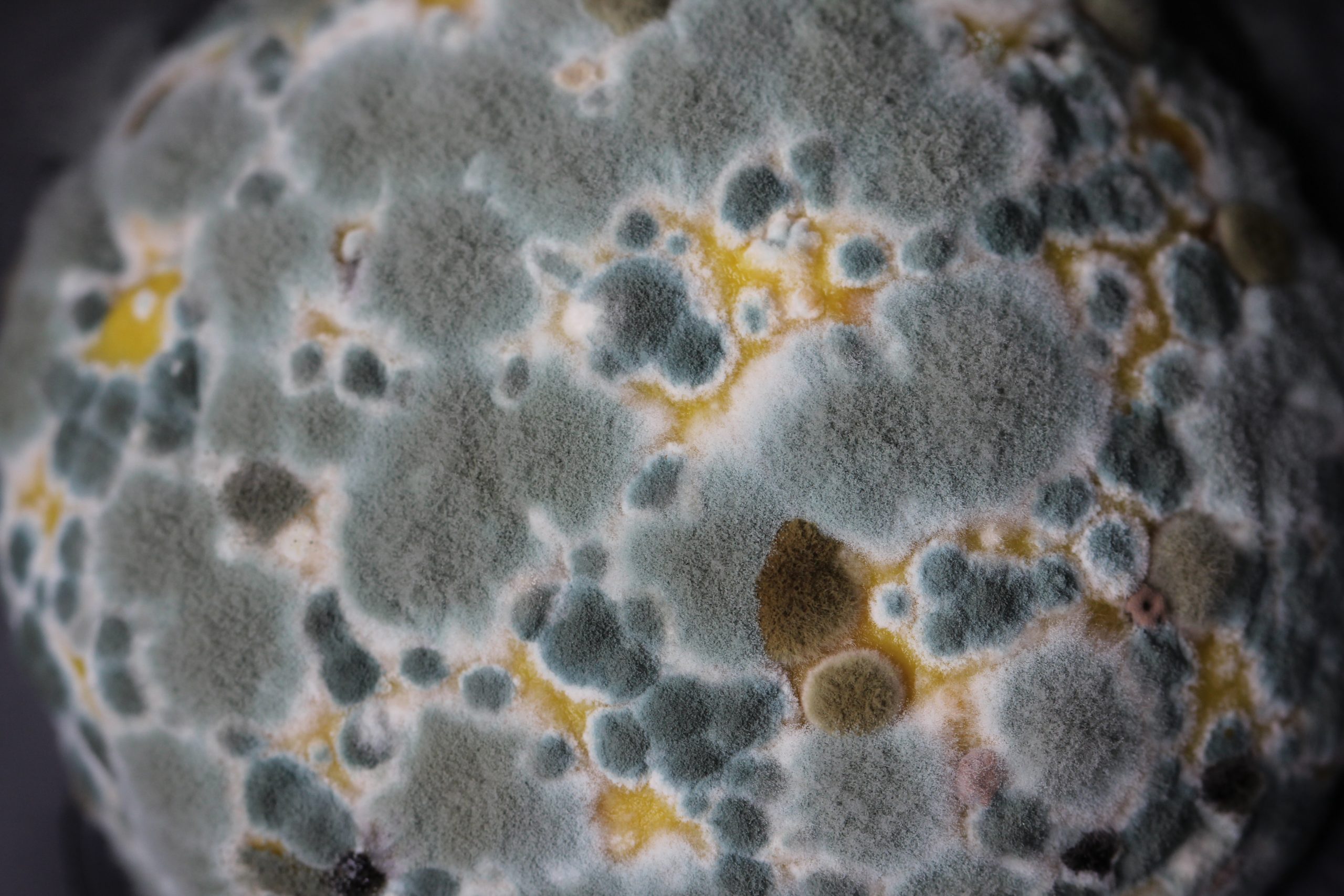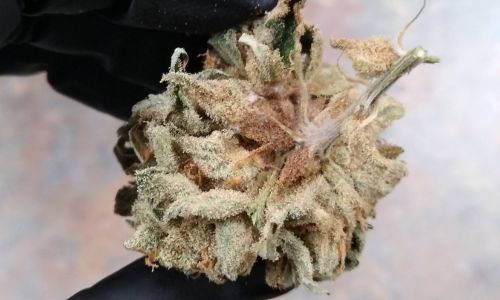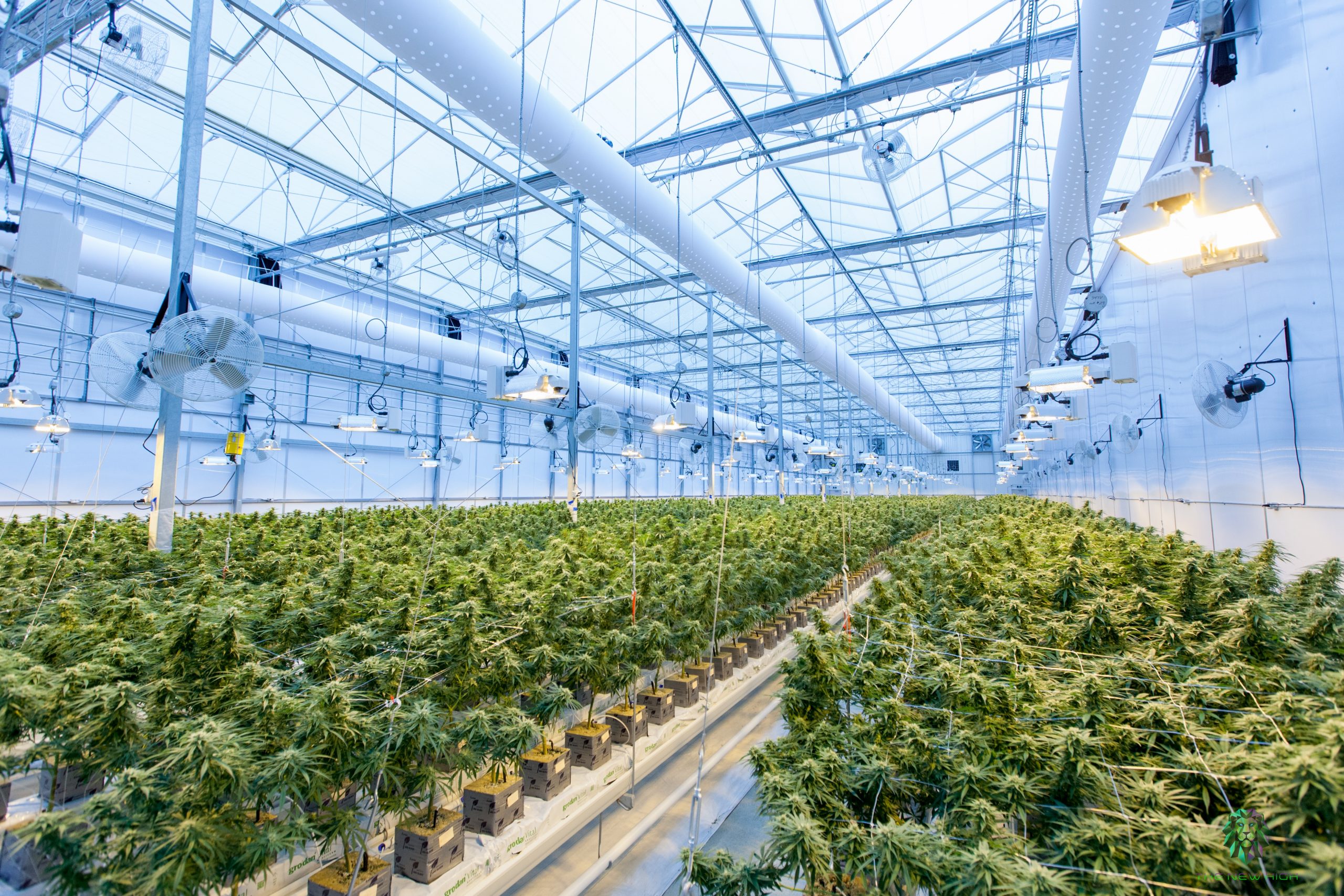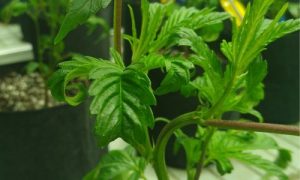
Growing cannabis takes a keen eye and knowledge of the plant to ensure a successful harvest. It can be thought of as walking a tightrope, if something is out of balance then the results could impact yield and quality. Or, in a worst case scenario, destroy the entire crop.
Mold and viruses are two of the most common ailments to impact cannabis crops. While they both may present some similar physical effects, they damage crops in different ways and need to be treated differently. The first step is being able to identify if the problem plaguing your crop is mold or a virus. Afterward, a plan can be made to eliminate the problem and preserve the crop as much as possible.

When people think of mold, the first thing that comes to mind is the leftovers from last week you forgot in the back of your fridge turning green. However, mold can impact nearly everything on the planet, including cannabis.
According to the Centers for Disease Control and Prevention (or CDC for short), “There are many different mold species that come in many different colors. Molds are sometimes referred to as mildew. They are found both indoors and outdoors in all climates, during all seasons of the year. Outdoors, molds survive by using plants and decaying organic matter such as fallen leaves as a source of nutrition. Indoors, molds need moisture and a carbon source from building materials or building contents to grow.”

Mold can impact cannabis throughout its entire lifecycle. Even cured bud and trim can be susceptible to mold if stored improperly. Humidity, temperature, lighting, and even what you feed your crop can impact mold and its growth rate.
From the roots to the flowering bud glittering with trichomes, mold can be a serious problem if the crop is not properly maintained. The crop damaging mold can go by many names; Botrytis, root rot, powdery mildew, etc. Each kind can impact a different part of the plant, and it is important to know how to care for the plant to prevent each kind from taking hold of your crop.
Mold can impact cannabis in areas that aren’t seen every day. When a plant’s soil is improperly maintained, mold can take hold in the roots. This mold infestation is one of the hardest to detect due to its location. However, mold in the roots will often show in other parts of the plant, including the leaves and even the bud itself.
When mold takes hold in a cannabis plant, it can also appear directly in the stalk. Stem rot, one of the most common blights to impact cannabis plants, can turn cannabis stalks brown and render them unstable to the point where they feel soft to the touch.
According to the Pacific Northwest Pest Management Handbook, “Seedlings may exhibit a damping-off, where the young plant collapses and the stem is brownish. Foliage can take on a yellowish coloration, then leaves turn brown and fall off the plant. There can be a rot in the crown tissues and the pith of stems can appear brownish-to-black in coloration.”
Even when your crop is dried and stored, if not properly cared for can still mold. Humidity and heat can create a gray mold that destroys your harvest and ultimately turns it into a pile of gray mush. Most commonly known as bud rot, this mold is one of the biggest destroyers of cannabis crops nationwide.

A virus is so much more than what many may think. When someone thinks of a virus, they typically think of the strains that impact humans. However, viruses can impact all living things, including cannabis plants.
Dozens of viruses can impact cannabis plants. Some of the viruses currently impacting the cannabis industry on a national level include (but are not limited to);
The viruses that impact cannabis can also impact crops such as corn, soy, wheat, alfalfa, and more. Much of what we know about cannabis viruses comes from research done on infected commercial crops. While symptoms may appear differently between crop species, they ultimately are nonetheless equally damaging.
In recent years, there has been an increase in the cross-impact of viruses that devastate traditional commercial crops transitioning to infect cannabis. It is important as an industry to use the existing information available as a base for future research to understand not only how they impact cannabis crops, but also prevent them.

Viruses that impact cannabis can take many different shapes, however, they all begin impacting the plant on the inside first. They begin working on the plant on a microscopular level before even starting to show physical signs of distress. However, once the signs begin to appear on the plant’s surface, they can come in many different forms.
Some of the most common signs of a virus impacting a cannabis plant include (but are not limited to);
A good grower knows you never stop learning. The cannabis industry as a whole evolves at a rapid rate, with new knowledge coming to light every day. In the grow side of the industry alone, new methods of combating problems like mold and viruses are being developed faster than at any other time in history.
Defense against problems such as mold and viruses starts with knowledge. By adopting a habit of learning, you are better arming yourself against the forces of nature that will damage your cannabis crops. A good defense begins with knowledge, and that knowledge can be the difference between a successful harvest and one that is a total loss.
Works Cited
Centers for Disease Control and Prevention. “What is Mold? | NIOSH.” CDC, 2022, https://www.cdc.gov/niosh/topics/indoorenv/whatismold.html. Accessed 14 March 2023.
Ocamb, CM. “Hemp (Cannabis sativa)-Crown and Stem Rot | Pacific Northwest Pest Management Handbooks.” Pacific Northwest Pest Management Handbooks |, 2004, https://pnwhandbooks.org/plantdisease/host-disease/hemp-cannabis-sativa-crown-stem-rot. Accessed 19 March 2023.
Segre, Ph.D, Julie. “Virus.” National Human Genome Research Institute, 17 March 2023, https://www.genome.gov/genetics-glossary/Virus. Accessed 19 March 2023.

to receive updates and news on our products, events and promos!